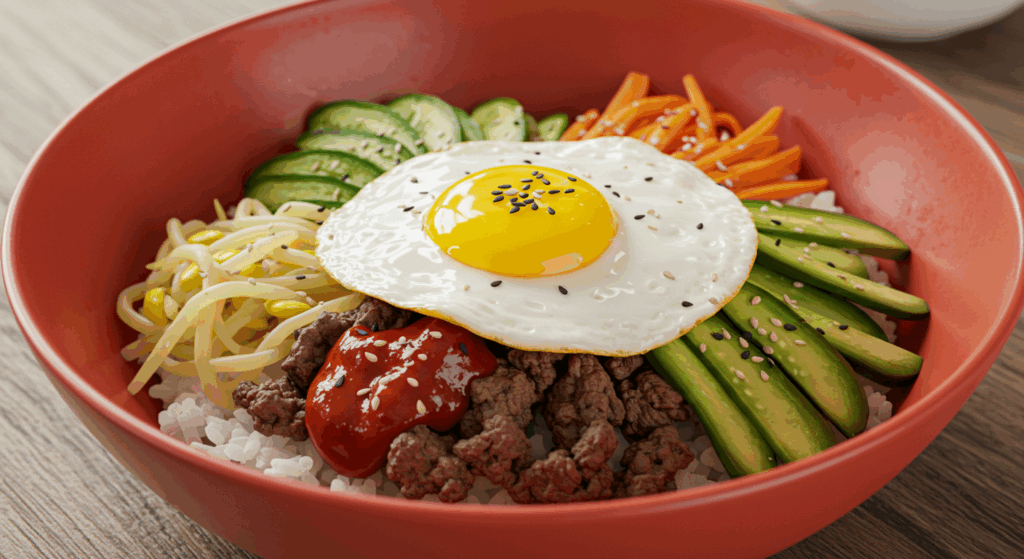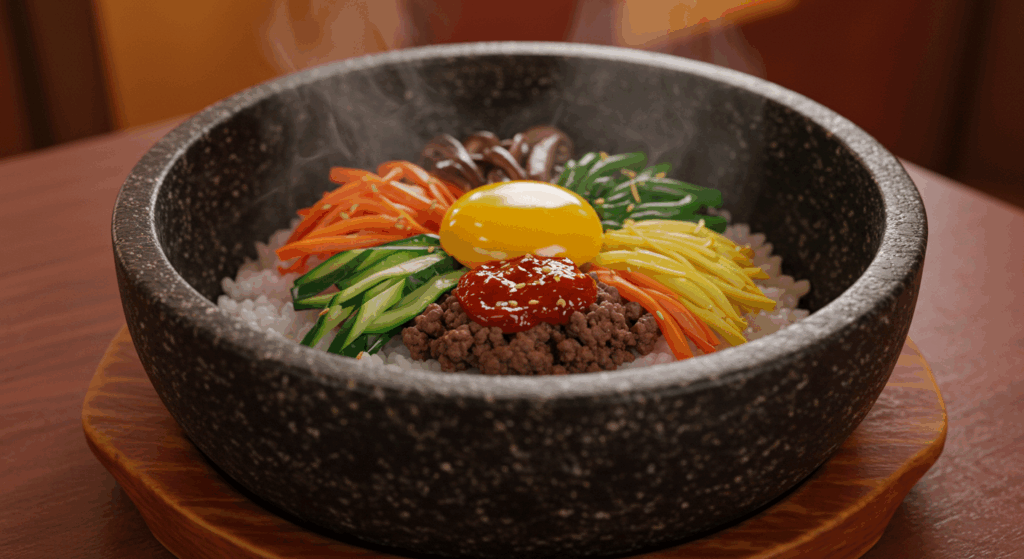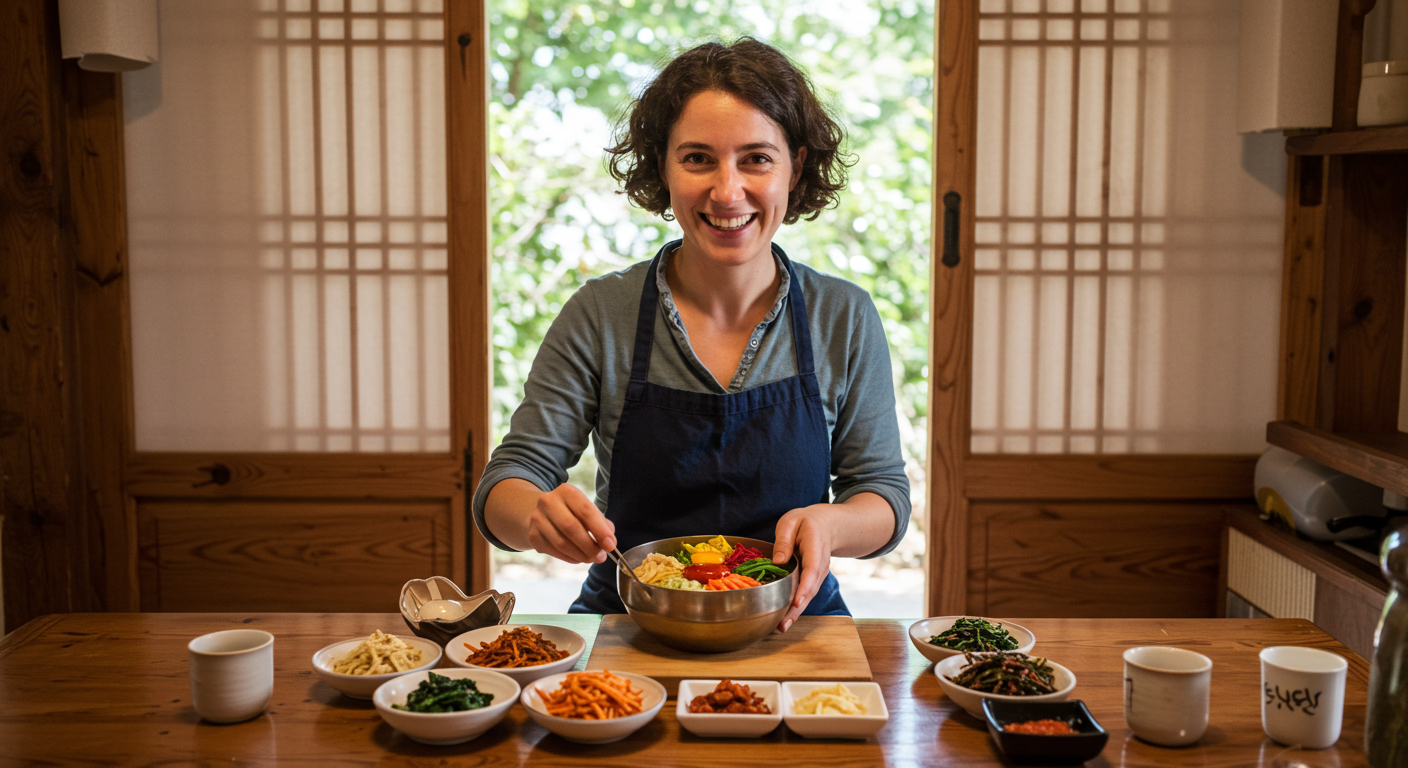“You mix all of this together?” my foreign friend asked, startled. The dish was Bibimbap. Korean bibimbap culture is more than just a meal; it’s a bowl full of stories. As a symbol of traditional Korean food, it’s winning hearts around the world.
First Experience – Awkwardness and Culture Shock
When foreigners first encounter bibimbap, they often find the colorful ingredients and the red gochujang sauce confusing. “Will it be too spicy?” “Can all these flavors really blend well?” Yet with the first bite, they’re often hooked by the sweet and spicy charm of gochujang.
Observation and Adaptation – Trying It Myself
They watch as Korean friends mix the bowl, mimicking the motion: gochujang on top of the rice, then mixing in vegetables, meat, and a fried egg. The rich combination surprises them. “This isn’t just food—it’s art.”


A Moment of Empathy – Discovering the Meaning Behind the Actions
Bibimbap is more than food. The act of mixing diverse ingredients into one reflects the Korean spirit of togetherness. It embodies communal healing, unspoken understanding, and relationship-centered culture.
This philosophy extends beyond the table. A mother combining leftover side dishes into bibimbap for her children was an act of love. In villages, communal bibimbap shared during festivities symbolized unity and joy. In school cafeterias, mixing and sharing bibimbap often forged new friendships.
Foreigners experiencing this realize that bibimbap is not just about taste—it is a cultural key that opens the door to understanding Korean values and ways of life. It’s food as a language of connection.
Conclusion – Changed Perspective and Fond Memories
What once seemed strange becomes a cherished memory. The lingering spice of gochujang, the harmony of flavors, and the warmth of shared meals. Korean bibimbap culture offers not just a culinary experience, but a heartfelt glimpse into Korean values. Now back home, he sometimes longs for that taste—and the feeling of Korean warmth it represents.
🔗 Recommended reads to go with this post
